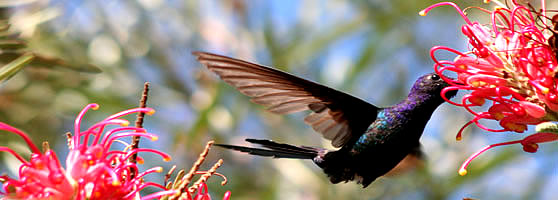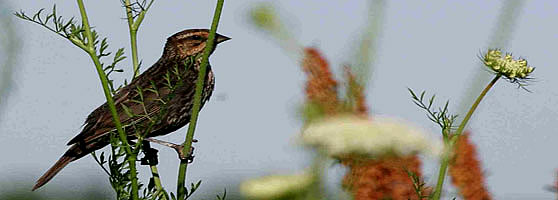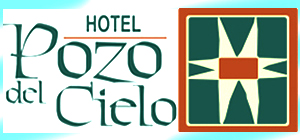Arequipa
Trekking Tours
- Chiguata Trek
- Capua Waterfall Trek
- Cotahuasi Trek
- Trekking Cotahuasi
- Cotahuasi Canyon - Ancient Llama Trek
- Colca Canyon Trek
- Trekking Colca Canyon
- Hiking Colca Canyon
- Mixed Colca Trip
- Colca Trek
- Colca Canyon Expedition
- Cabanaconde Andagua Trek - Volcanoes Valley
- Llama Trek Andean Cultural Experience
- Colca Canyon Trek And Climb Misti Volcano
- Colca Trek And Chachani Climbing
Climbing Tours
- Ubinas Volcano
- Misti Volcano
- Misti Aguada Blanca
- Sabancaya Volcano
- Chachani Volcano
- PichuPichu Mountain
- Mismi Mountain
- Ampato Mountain
- Hualca Hualca Mountain
- Coropuna Mountain
Biking Tours
- Arequipa Biking Tour
- Chachani Downhill
- Misti Downhill
- Salinas Salt Lake
- Ubinas Canyon
- Colca Canyon Biking
- Colca Mountain Biking Tour
- Biking Colca Canyon
- Biking And Trekking Colca Canyon
- Colca Canyon Adventure Biking Tour
- Majes Canyon
- Cotahuasi Canyon Biking
- Volcanoes Valley
Horseback Riding
- Arequipa Horseback Riding - Campiña Tour
- Colca Horseback Tour
- Riding Colca Canyon
- Cotahuasi Canyon Horse Tour
- Arequipa Colca Puno
Classic Tours
- Arequipa City
- Day Tour To Reserva De Salinas Y Aguada Blanca
- Arequipa Campiña Tours
- Toro Muerto Petroglyphs
- Salinas Lagoon
- Colca Canyon Tour
- Colca Tour - Long Route
- Cotahuasi Canyon Tour
Sandboarding Tours
LAGUNAS DE MEJIA NATIONAL BIRD SANCTUARY $105 USD Per Person
GUIDED TOUR FOR BIRDWATCHING LOVERS - Full Day Tour
Lagunas de Mejia National Sanctuary is located on the southwest on Arequipa, just 140km away and two hours driving on paved road. Just 20 minutes more is the small coastal town as known Mollendo nearby of the sanctuary. The lagoon are located next of the Pacific Ocean, this place is protected area and refuge for migratory birds from all over the world.The Mejia National Sanctuary was established on February 24th, 1984 (D.S.) N 015-84-AG, and is in the department of Arequipa, province of Islay with an area of 690.6 hectares surrounded by Tambo River. The main reason why the birds landed here is because the terrain provides lot food from the river, lagoon and the Pacific Ocean.
The sanctuary of Maejia is an 8km or 5mi stretch of coastal marsh, that attracts large flocks of domestic and migratory birds as the rare Parihuana (Chilean flamingo), the Peruvian Pelican, Black Skimmer, Franklin's Gull, Peruvian Pelican, Harri's Hawk, the American kestrel, the gaviota gris (Larus modestus), the playero blanco (Calidris alba), the rayador (Rinchops niger), the Peruvian Seagull (Larus belcheri), the Dominion Seagull (Larus dominicanus), the Gaviota Capucho Gris (Larus cirrocephillus), the Zambullidor Pimpollo (Rollandia rolland), the Zambullidor Grande (Podiceps major), the Pato Sutro (Anas flavirostris) the Pato Garantillo (Anas bahamensis), the Pato Colorado (Anas cyanopltero), the Polla de Agua (Gallinula chloropus), the Choca (Fulico americana), the Gallineta Comun (Rallus limicola), the Garza - Heroncuca (Ardea cocoi) the Big White Heron (Egretta alba), the Small White heron (Egretta thula) and the Blue Heron (Hydronassa caerulea). In total there are more than 190 species of birds that use the Sanctuario Nacional Lagunas de Mejia.
It possesses an area of 690.6 hectares and includes different habitats comprising swamps, Salt Marshes, Totora Reeds, hills, riverside estuaries, fields of salt grass, and sandy beaches.
It is an isolated ecosystem and the only vestige, between the north of Chile and Pisco, of the ancient flooded lands that were part of the American coast, drained for agriculture for centuries. In spite of being located at sea level and 170 S latitude, the annual average temperature in the Mejia Lagoons is usually 20ºC (68F), under the effect of the Peruvian (Humboldt) warm stream.
The lagoons are separated from the ocean by a large fringe of beaches and sandy pits. Within the protected area (690 hectares/1,704 acres), several habitats are grouped, including lagoons of different degrees of salinity, salt marsh, reed patches, salt mines and wild grass that form a complex ecosystem. This particularly valuable scenario homes 157 bird species, of which 72 are residents, 62 are regular visitors and 24 sporadic visitors.
Conservationist and investigation efforts are being made today to entirely preserve this natural treasure.
The purpose of this sanctuary is to protect the fauna and flora, and to promote tourism.

TOUR ITINERARY TO MEJIA NATIONAL BIRD SANCTUARY
The tour begins from the hotel of our customers by private transport and official tour guide. We take the Panamerica highway to southwest of Arequipa until we arrive to Cocachacra Valley, where we stop to visit all sugar factories named Chucarapi, short guided inside the factory to see how the locals process the black sugar. Continue traveling along the Tambo River we cross to the left bank and finally arrive to Mejia Lagoons, where is located the national bird sanctuary.After we register our name on the guest book you will be introduced to the sanctuary beginning with explanation of the small museum. In this museum we will find a complete map of the each protected area and more details about each lagoon and detailed trail marked for nice walk birding more than 190 species living in this national bird sanctuary.
The walking bird tour in this sanctuary takes about 3-4 hours, also you can have plenty time to enjoy the beach and have picnic around the Pacific Ocean.
If time permit we continue walking on the shores to watch more migratory birds on this intangible area for fauna and flora.
Around 3 pm we aboard again the private transport and we drive to Mollendo and from there take a dirt road to the natural viewpoint as known Punta Bandurrias, this natural lookout is 200m high and the top is possible to observe the bay of Punta de Bombon and the countryside and the beaches.
Around 4pm return to Arequipa taking another paved road through the desert and around 6pm arrives to the hotel in Arequipa.
For more information about the birds in the Lagunas de Mejir sanctuary CLICK HERE.

BIRDWATCHING TOUR INCLUDES
- English-speaking tour guide
- Round trip public bus tickets (Backpacker service)
- Private van (Private service)
- All entrance to Majia National Bird Sanctuary
- Lunch or picnic next of the sea
RECOMMENDATION |
| TOUR SCHEDULE & COST 2013 | ||
| DATE | TOUR | COST |
| Any day |
LAGUNAS DE MEJIA NATIONAL BIRD SANCTUARY $105 USD Per Person GUIDED TOUR FOR BIRDWATCHING LOVERS - Full Day Tour |
Backpacker Service (Public Bus) 1 to more paticipants $105 USD each Private Service (Private van & guide) 2 participants $193 USD each 3-4 participants $143 USD each 5 to more participants $118 USD each |
| Discount: $5 USD of discount for South American Explorers Club Members Discount 3%: Tour Operators or Travel Agencies Only Students: $5 USD of discount only with valid green ISIC card |
||
| Organized Groups: We offer private service and any time/day according request | ||
| Group size: up to 12 participants per each guide - We need minimum two participants to develop this tour | ||
| BOOK HERE: We highly recommended to book space prior your arrival to Arequipa | ||
Exchange rate $1 USD = S/. 3.02 (rate may vary daily).
NO INCLUDED
- Travel insurance
- Hotel in Arequipa
- Soft and alcoholic drinks
- Tip for guide and camp staff
WHAT YOU NEED TO BRING/CARRY
- Summer clothes (November to May)
- Winter clothes (June to October)/li>
- Hat or cap to protect you from the sun
- Sun block (sun protection cream)
- Camera, plenty of film and spare batteries
- Sunglassesf
- Umbrella
- Towel
- Swimwear in case you like to enjoy the beach
- Sandals and other personal things
ADVICE FOR BIRD WATCHING LOVERS
The migratory birds are usually here between January and March and the best viewing time is in the mornings.We also recommend to bring you on binoculars to catch better view of birds.
During the summer season (Dec - March) is recommend to bring towel, sandals and plenty of sunscream to enjoy the beach. Of course we recommend to bring insect repellent for the sanctuary area.
The park can be accessed on foot, by bike, or by car.
RECOMMENDED TOURS
PERU ADVENTURE TOURS guides recommend tours to the Colca canyon mentioned below:COLCA CANYON
COTAHUASI CANYON
TORO MUERTO PETROGLYHS
SALINAS LAGOON
CONTACT US
For more information about the tour or you request a new date to departure for this tour, please contact us....
Some of our clients e-mail us saying our confirmation e-mails are placed to their spam folder rather than their inbox. We recommend to modify your JUNK or SPAM FILTER SETTINGS to receive our e-mail peruadventurestours@hotmail.com on the correct inbox. You may also want to add this email address to your list of known contacts. This will prevent our responses from being filtered into your Junk or Spam mail folder.
References Of Travel Guide Books To Peru
ADDITIONAL BOOKING SERVICES
- Camping Zone In Arequipa
- Bus Tickets All Over Peru
- Guided Tour Bus From Cusco To Puno
- Bus Transfer From Arequipa To Puno
- Bus Transfer From Colca Canyon To Puno
- Bus Transfer From Puno To Arequipa
- Airplane Tickets In Peru
- Railway Tickets In Peru
- Learn Spanish In Peru
- Rent A Car In Peru
- Rental Camping Gear In Peru
- Work In Peru
- Donation Program
PERU TRAVEL INFORMATION
- Embassies And Consulates In Peru
- Information Of South American Camelids
- Tips To Travel Around Peru
- Peru Adventure Magazine
- History Of The Incas And Tawantinsuyo Territory
- Inti Raymi Celebration In Cusco - The Festival Of The Sun God
- Travel Insurance To Peru
- Peruvian Government Taxes
- Travel Agent
PERUVIAN GASTRONOMY INFORMATION
- Peruvian Food
- History Of The Peruvian Cuisine
- Inca Cuisine
- Cuisine Of The Central Coast Of Peru
- Cuisine Of The Northen Coast Of Peru
- Cuisine Of The Andes Of Peru
- Cuisine Of Peruvian Jungle
- Art Culinary Of Arequipa
- Desserts And Sweets Dishes Of Peru
- Peruvian Recipes
- Peru Gastronomic Festivals
- Cultivation Of Ancient Plants Of Peru
- Coca Leaf







